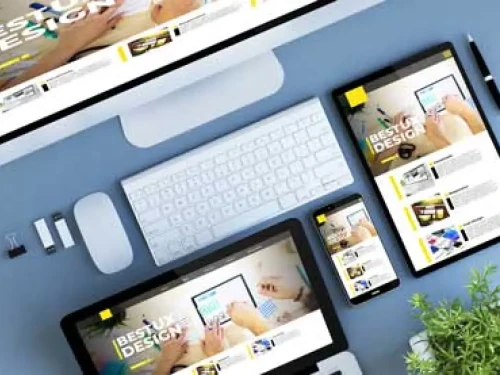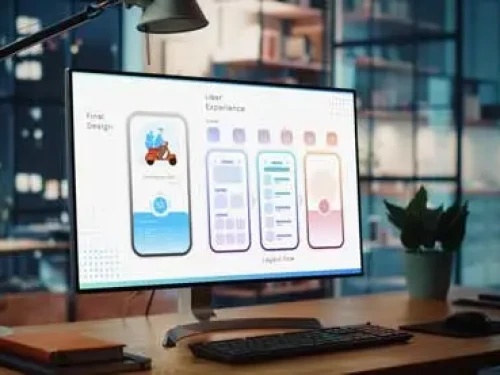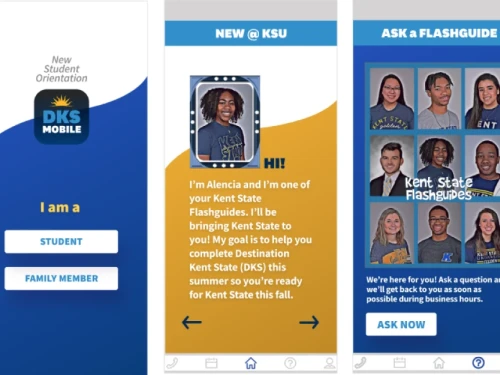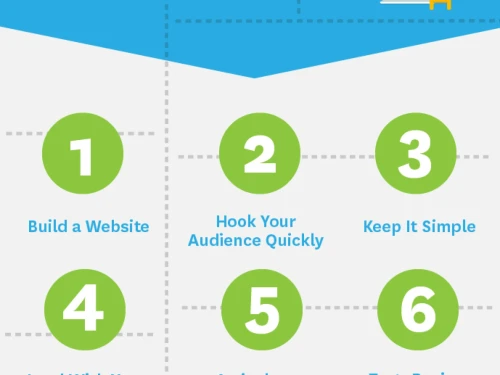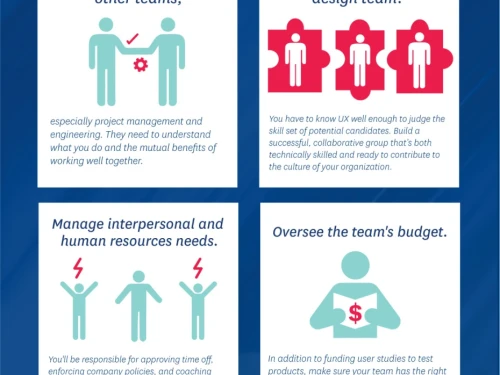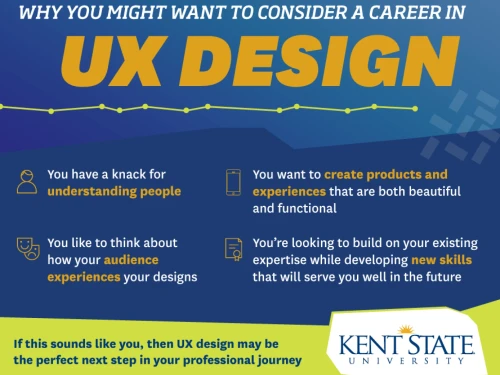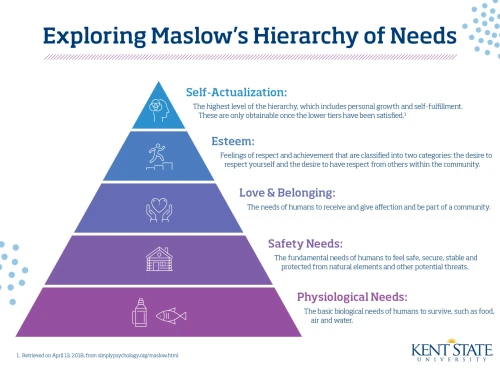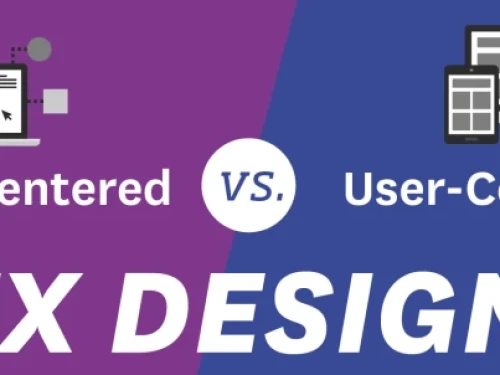User Experience Design
Kent State’s expertise in User Experience (UX) prepares students to excel in creating impactful, user-centered digital experiences. With a focus on cutting-edge practices, human-centered design, and industry insights, Kent State equips graduates with the skills to innovate in this dynamic field. Explore topics like design principles, career paths, responsive frameworks, and strategies for crafting intuitive, engaging interfaces.
Related Blog Posts
Knowing how to write a design brief can help drive an overall understanding of a project’s needs. A truly excellent design brief, however, bridges the terrain between a good idea and making it into reality. By effectively communicating all the essential environmental factors, requirements, constraints and needs of a design project, a brilliant design brief can energize all parties involved.
Kent State University’s online Master’s in UXD program is proud to be accredited by the National Association of Schools of Art and Design (NASAD). The only accreditation agency covering the entire field of art and design that the United States Department of Education recognizes, NASAD has approximately 360 member institutions.1
Millions of people apply for a master’s degree program in the hopes of getting advanced education to improve their careers. In some career fields, a master’s degree is required for certain positions. In others, it’s good to have but not essential.
It used to be that computer programmers learned how to design a robust user experience on the fly, sometimes with minimum computer science training. Those days are long gone. Roles for self-taught Renaissance experts have largely given way to a number of specialized careers in programming and web design. One such career is the lucrative, in-demand field of user experience (UX) design.
Page layout design, also called page composition, combines eye-pleasing aesthetics with compelling text to communicate a message. However, perfecting the on-page user experience (UX) isn’t as easy as it sounds. Instead, human-centered UX designers rely on fundamental design principles to achieve their goals. Learn how the following design elements help create an effective page layout and why it matters to your users.
Alison Hayne’s first app design project had 6,000 users.
At first glance, Chello Elmi might seem like an unusual fit for a UXD program. She studied psychology as an undergraduate, but when it came time to earn her master’s, all she knew was she didn’t want to continue in a therapeutic or mental health field.
Responsive Web Design (RWD) is the approach that suggests that website design and development should enable each site to respond automatically to a user’s behavior and environment—that is, whether that person is using a laptop, iPad, Android phone or other device, viewing in portrait or landscape mode, and so on.1 In the case of public displays, recent work also considers the viewer’s distance from the screen within the context of RWD.2
User Experience (UX) designers are highly sought after in a wide array of industries, from computer and software companies such as Apple, Microsoft and Adobe to popular websites such as LinkedIn, Google and Amazon. You can enjoy a highly paid career with an investment company, major retailer or entertainment firm.
User experience design (UXD) lets you use your creativity, research skills and technological expertise to shape how others view the world. If you want to excel at building your UX resume, be prepared to impress employers with new ways to solve problems. You also need a skill set that’s grounded in UX fundamentals, yet shows synergistic capability.
The definition of “product designer” as a professional role can be a bit ambiguous. Job titles naturally change over the years as technology and culture change, and because creative professionals such as designers typically want to stand from their peers.1 The title “product designer” is one that has risen in popularity in recent years. Because the job responsibilities of a product designer can overlap those of similar roles such as a user experience (UX) or user interface (UI) designer, even people who work alongside them may not be sure exactly what the job of product designer entails.
Part of finding the perfect UX design career is building an awesome portfolio. Below, we’ve provided five easy steps to help you develop a portfolio that is sure to turn heads, helping to give you and your career the opportunity to excel.
As user experience (UX) designers consider their long-term career goals, some assume that management is the obvious next step. It’s true that the best managers usually have a background in the field they manage. But management also requires skills for which designers aren’t often trained, including leadership, time management, budgeting and interpersonal skills. Not every talented designer is a good fit as a manager, but for the right person, UX design management can be an immensely rewarding and satisfying career path.
An increased emphasis on interaction with digital platforms in the contemporary world means new career paths for creatives working in digital fields—especially those whose skills lend themselves to user experience (UX) design and development. If you’re a graphic designer thinking about a career change, consider making the switch to UX design.
User experience design (UXD) is a strategic design approach that attempts to guide product or platform users through a meaningful and easy-to-navigate experience. While designers can use many methods to help their users navigate a given platform, how users will actually choose to interact remains outside UX designers’ control. Therefore, much of UXD inherently deals with the prediction of human behavior; this can be thought of as the psychology of UX design.
Today’s interactive designers are tasked with consistently achieving something more than aesthetically striking creative. In today’s marketplace, digital media is king—and the evolving need for digital marketing is far more complex than that of more traditional marketing channels. Designers must consider the different journeys being undertaken by those for whom they are designing. They must design with the knowledge that 30 percent of all commerce is conducted on a mobile phone and let the platform a person may be using inform their work.1
When studying user experience (UX) online, there’s almost no greater source of knowledge than Andrew Shipka.
Most of us think about user experience (UX) design as a tech-oriented field, where expert coders build flashy apps and web experiences that dazzle. But as Ben Woods, assistant professor in Kent State University’s online Master of Science in UX Design program, points out, UX is “really all about people. It’s not about the technology.”
Today, when a person explains that they work as a user experience (UX) designer, chances are that more people understand what that means than they would have a decade earlier.1 As technology and innovation become more and more interwoven into the fabric of business, UX design is becoming an increasingly ubiquitous function.
Websites, eCommerce sites, email campaigns, eReaders, mobile apps and more—if you’ve used a screen or a keyboard lately, you’ve touched the work of someone with a job in user experience design (UXD).
For students who have prior experience in UX, come to the program with a willingness to challenge what you already know. While you may have developed a specific technique or process, use the program’s curriculum as an opportunity to supplement or improve your skillset.
Q&A with user experience design student, Jessica K (Kent State Online, ’17)
Like many, you may be interested in user experience design (UXD) as a concept. Yet, you may be in a different field and unable to see a clear connection of how your career could ever transition into UX design.
I can’t emphasize this enough: Consider each deliverable as possible portfolio material. Starting the course, I was so focused on learning, getting good grades and hitting those deadlines that I often overlooked adequately documenting the process. When it came time to create my portfolio, I struggled to recall all of the steps I took to arrive at my solution. Be sure to take some time after portfolio-worthy assignments to note the steps, objectives and results of your efforts. Your life will be much easier later on.
What makes someone a repeat visitor to a website or motivates them to share it with their networks via social channels? There isn’t one correct answer to either of these questions, because there is a multi-layered, strategic approach to attracting and converting people into frequent visitors. Generally speaking, the best way to achieve this goal is to provide the site audience with valuable, relevant content.
So you’re a UXD professional tasked with building a website for a client that will not only draw people in, but keep them clicking around on the digital property for as long as possible. You’re aware that the Internet has caused people to consume vast amounts of information simultaneously, and a byproduct of this is that your site visitors have extremely short attention spans.
Incorporating video and a well-written, frequently updated blog can help attract the attention of consumers and potentially convert them into viable leads. Having a website that leverages social media integration can also help raise visibility and boost traffic.
Most people considering a career in UXD may not fully understand the difference between user interface vs. user experience, but it’s a critical piece of of knowledge to understand. Ryan Spencer, a UX professional, explains these concepts in the most simple, yet matter-of-fact way possible.
Since you made it to this post, you’ve most likely heard of user experience design (UXD). You may even have a clear understanding of what it means already. For those who don’t, however, a UX designer is a person who works to make a platform or product as user-friendly, enjoyable and useful as possible for end users. This involves seamlessly integrating digital systems and technology into both traditional products and new, innovative products.
It’s no secret that we live in a digital world. The Internet has forever shifted the way that we listen to music, watch videos, read the news and connect with people from all over the world. When it comes to marketing and advertising, brands often try to make an impact with consumers using a variety of media, while hosting them all on a single website.



